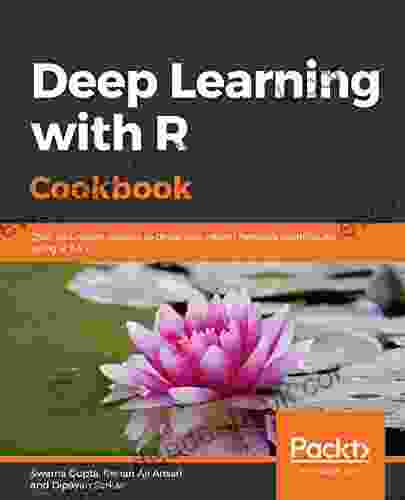The Concept of Neutrality in Stalin's Foreign Policy, 1945-1953: The Harvard Cold War Studies Book

Following the end of World War II in 1945, the world was divided into two main ideological blocs: the Western bloc led by the United States and the Eastern bloc led by the Soviet Union. The Cold War, a period of intense geopolitical rivalry and tension between these two blocs, ensued. 5 out of 5 During this period, the concept of neutrality became a significant factor in international relations. Some countries, such as Switzerland and Sweden, sought to maintain a neutral stance, avoiding alignment with either the Western or Eastern bloc. This article will examine the concept of neutrality in Stalin's foreign policy from 1945 to 1953, exploring its evolution, motivations, and implications. In the immediate aftermath of World War II, Stalin's foreign policy was characterized by a cautious and pragmatic approach. He sought to consolidate Soviet control over Eastern Europe and expand Soviet influence in other parts of the world. However, he also recognized the need to avoid direct confrontation with the United States. In his speech at the Potsdam Conference in 1945, Stalin stated that the Soviet Union's policy was based on the principles of "peaceful coexistence" and "non-interference in the internal affairs of other countries." This policy was intended to create a buffer zone between the Soviet Union and the Western bloc and to prevent the United States from intervening in Eastern Europe. As the Cold War intensified, Stalin's neutrality policy evolved. In 1947, he announced the "Zhdanov Doctrine," which declared that the Soviet Union would support communist movements around the world and oppose the spread of Western influence. This policy led to increased tensions with the United States and its allies. Despite his support for communist movements abroad, Stalin continued to pursue a cautious foreign policy. He was reluctant to risk a direct military confrontation with the United States, and he sought to avoid a nuclear war. As a result, he often supported the concept of neutrality as a way to reduce tensions and maintain stability. The Harvard Cold War Studies Book, published in 1955, provides valuable insights into Stalin's neutrality policy. The book is a collection of essays by American scholars who analyzed the Soviet Union's foreign policy during the Cold War. The essays explore a variety of topics, including Stalin's motivations for pursuing neutrality, the implications of his policy for international relations, and the impact of the Cold War on global stability. The book argues that Stalin's neutrality policy was motivated by a desire to consolidate Soviet control over Eastern Europe, to expand Soviet influence in other parts of the world, and to avoid a direct military confrontation with the United States. The essays also discuss the challenges and limitations of Stalin's policy, and they assess its impact on the course of the Cold War. The concept of neutrality played a complex and evolving role in Stalin's foreign policy from 1945 to 1953. Initially, Stalin sought to maintain a neutral stance to consolidate Soviet control over Eastern Europe and avoid direct confrontation with the United States. However, as the Cold War intensified, he became more supportive of communist movements abroad and adopted a more confrontational approach towards the West. Despite this, he continued to pursue the concept of neutrality as a way to reduce tensions and maintain stability. The Harvard Cold War Studies Book provides valuable insights into Stalin's neutrality policy. The book explores the motivations behind his policy, the challenges and limitations it faced, and its impact on the course of the Cold War. It remains an important resource for scholars and policymakers seeking to understand the complexities of Soviet foreign policy during this period.Language : English File size : 2250 KB Text-to-Speech : Enabled Screen Reader : Supported Enhanced typesetting : Enabled Word Wise : Enabled Print length : 444 pages Stalin's Initial Post-War Policy
The Evolution of Stalin's Neutrality Policy
The Harvard Cold War Studies Book
References
5 out of 5
| Language | : | English |
| File size | : | 2250 KB |
| Text-to-Speech | : | Enabled |
| Screen Reader | : | Supported |
| Enhanced typesetting | : | Enabled |
| Word Wise | : | Enabled |
| Print length | : | 444 pages |
Do you want to contribute by writing guest posts on this blog?
Please contact us and send us a resume of previous articles that you have written.
 Book
Book Novel
Novel Chapter
Chapter Text
Text Story
Story Reader
Reader E-book
E-book Magazine
Magazine Paragraph
Paragraph Sentence
Sentence Bookmark
Bookmark Glossary
Glossary Foreword
Foreword Preface
Preface Synopsis
Synopsis Annotation
Annotation Manuscript
Manuscript Codex
Codex Classics
Classics Narrative
Narrative Biography
Biography Autobiography
Autobiography Memoir
Memoir Encyclopedia
Encyclopedia Thesaurus
Thesaurus Character
Character Borrowing
Borrowing Stacks
Stacks Archives
Archives Research
Research Scholarly
Scholarly Lending
Lending Reading Room
Reading Room Special Collections
Special Collections Interlibrary
Interlibrary Literacy
Literacy Thesis
Thesis Reading List
Reading List Book Club
Book Club Textbooks
Textbooks Kirsten Deleo
Kirsten Deleo Arthur J Rynearson
Arthur J Rynearson Mina Azer
Mina Azer Sharon Brant
Sharon Brant Steve Johnson
Steve Johnson Kindle Comixology
Kindle Comixology James Wade
James Wade Wayne Visser
Wayne Visser Bob Rice
Bob Rice Mandy Magro
Mandy Magro Kirill Kolodiazhnyi
Kirill Kolodiazhnyi Arthur Phillips
Arthur Phillips Steve Corbett
Steve Corbett Tom Mclaughlin
Tom Mclaughlin Jathan Janove
Jathan Janove Cinzia Bearzot
Cinzia Bearzot Jessica Anderson
Jessica Anderson Patricia Harris
Patricia Harris Chris Adkins
Chris Adkins David Buckley
David Buckley
Light bulbAdvertise smarter! Our strategic ad space ensures maximum exposure. Reserve your spot today!

 Mason PowellThe Comprehensive Training Manual for Pilots: An In-Depth Guide to Aviation...
Mason PowellThe Comprehensive Training Manual for Pilots: An In-Depth Guide to Aviation...
 Herman MitchellOver 45 Unique Recipes To Delve Into Neural Network Techniques Using Python...
Herman MitchellOver 45 Unique Recipes To Delve Into Neural Network Techniques Using Python... Walter SimmonsFollow ·14.7k
Walter SimmonsFollow ·14.7k Manuel ButlerFollow ·16.6k
Manuel ButlerFollow ·16.6k Roger TurnerFollow ·3.5k
Roger TurnerFollow ·3.5k Ira CoxFollow ·8.3k
Ira CoxFollow ·8.3k Dwight BellFollow ·9.8k
Dwight BellFollow ·9.8k Tony CarterFollow ·5k
Tony CarterFollow ·5k Dawson ReedFollow ·9.1k
Dawson ReedFollow ·9.1k Adam HayesFollow ·19.9k
Adam HayesFollow ·19.9k

 Elias Mitchell
Elias Mitchell50 Amazing Color Paintings Of Pierre Paul Prud'Hon French...
Pierre Paul Prud'Hon (1758-1823) was a French...

 Owen Simmons
Owen SimmonsAgenda 21: A Comprehensive Guide to Glenn Beck's Baseless...
Agenda 21 is a...

 Mark Twain
Mark TwainExploring the Intricate Art of Choreography: Craft,...
Choreography, an art form that combines...

 Robert Heinlein
Robert HeinleinWhere Do Hurricanes, Typhoons, and Cyclones Come From?
A 2nd Grade Science...

 Isaiah Price
Isaiah PriceThe Profound Place of Music in the Australian Aboriginal...
: Unveiling the Heartbeat...
5 out of 5
| Language | : | English |
| File size | : | 2250 KB |
| Text-to-Speech | : | Enabled |
| Screen Reader | : | Supported |
| Enhanced typesetting | : | Enabled |
| Word Wise | : | Enabled |
| Print length | : | 444 pages |










